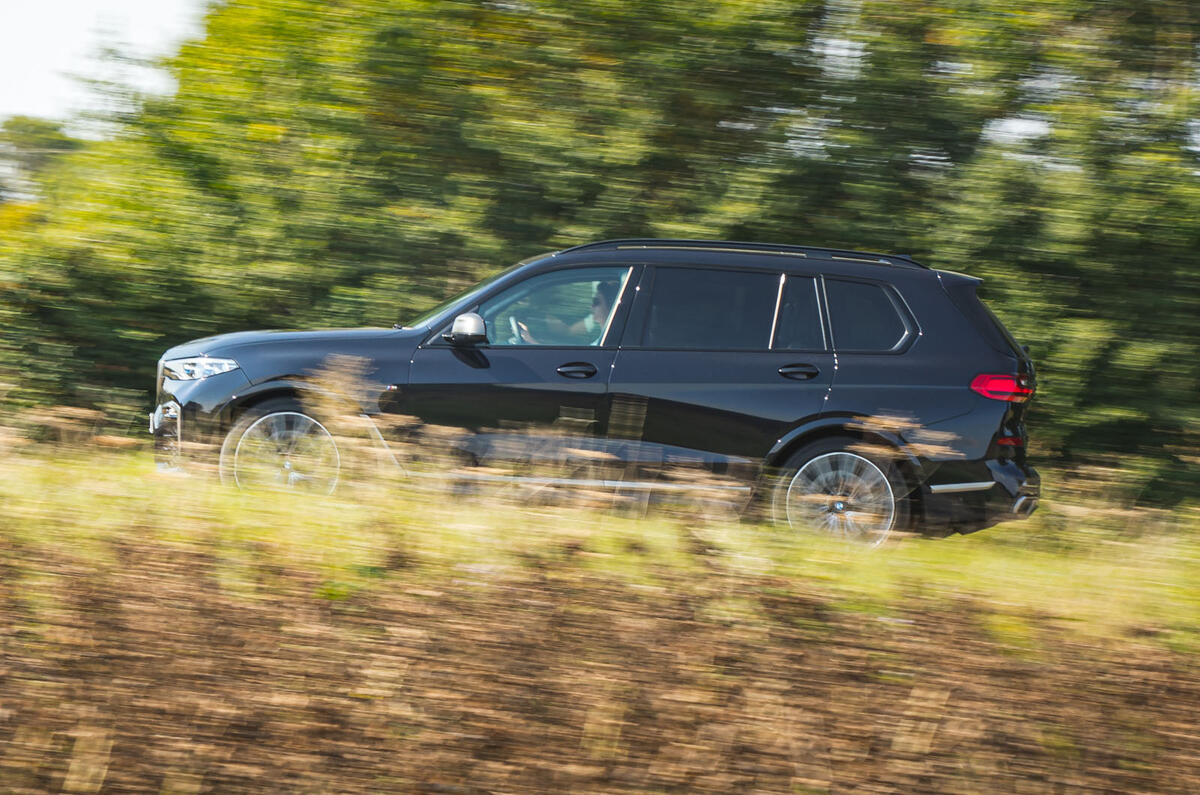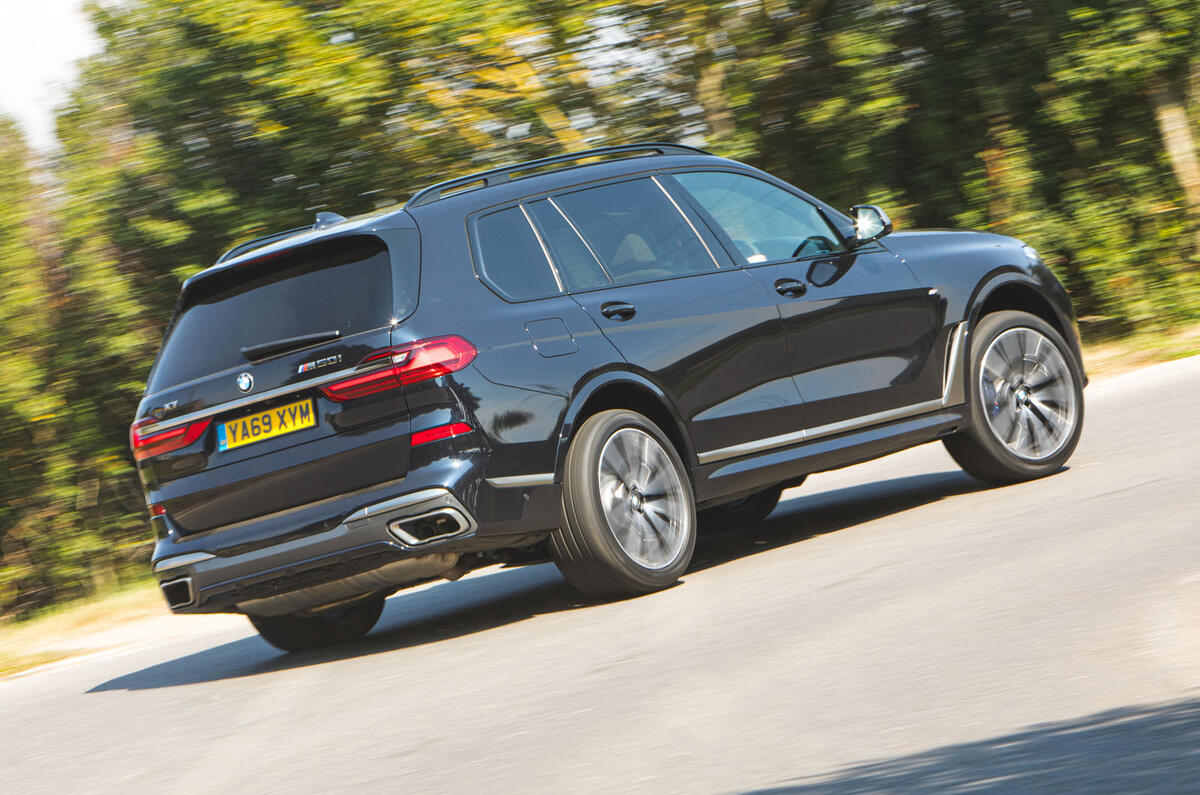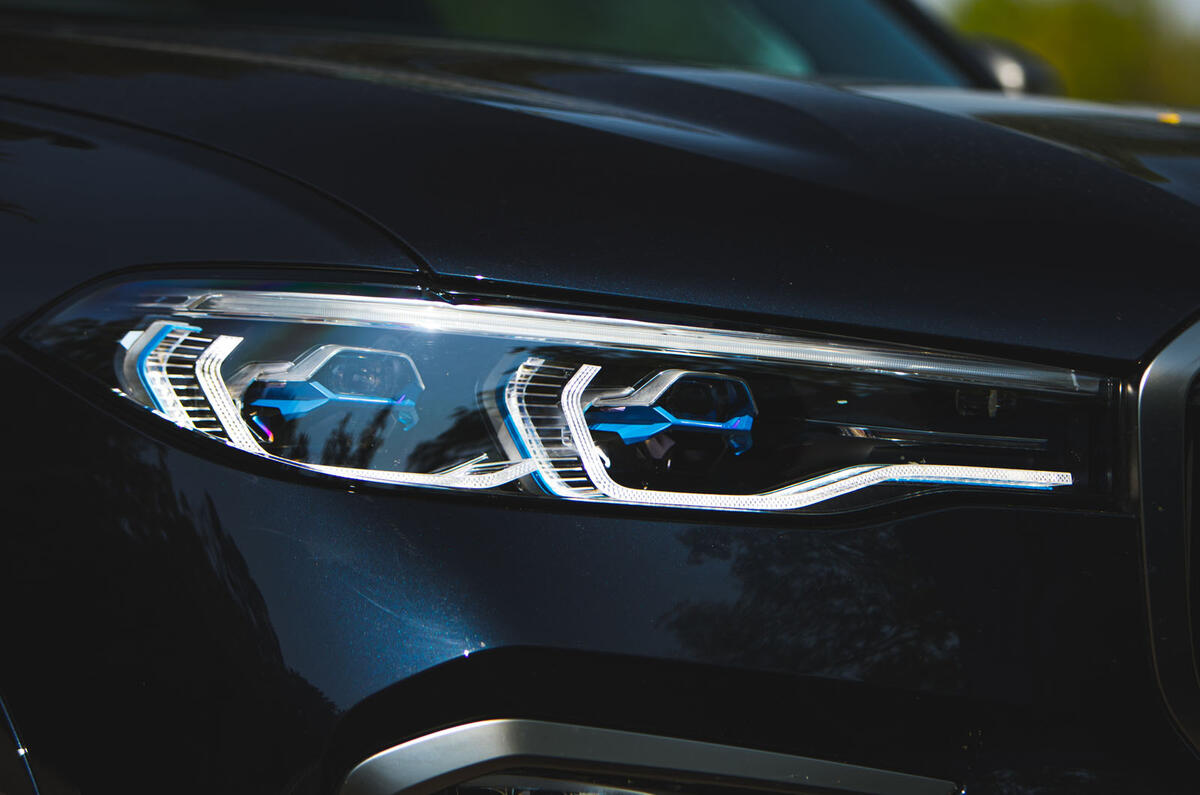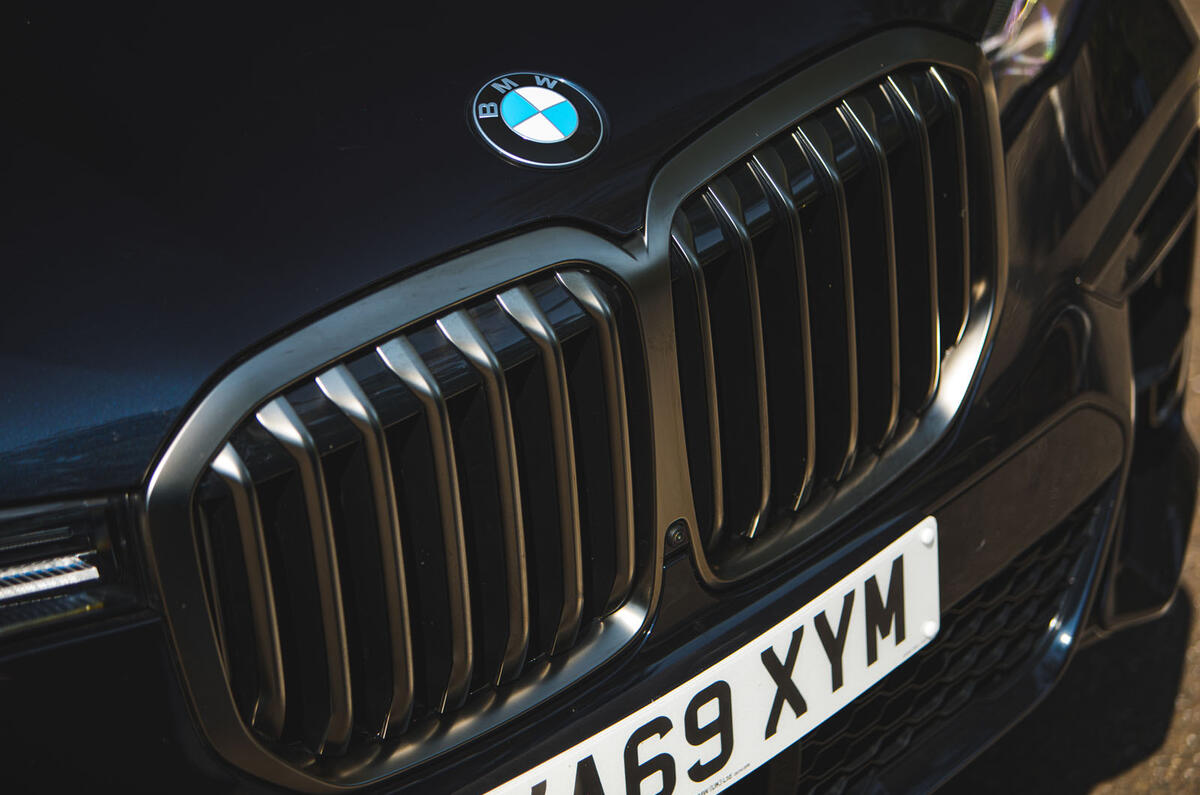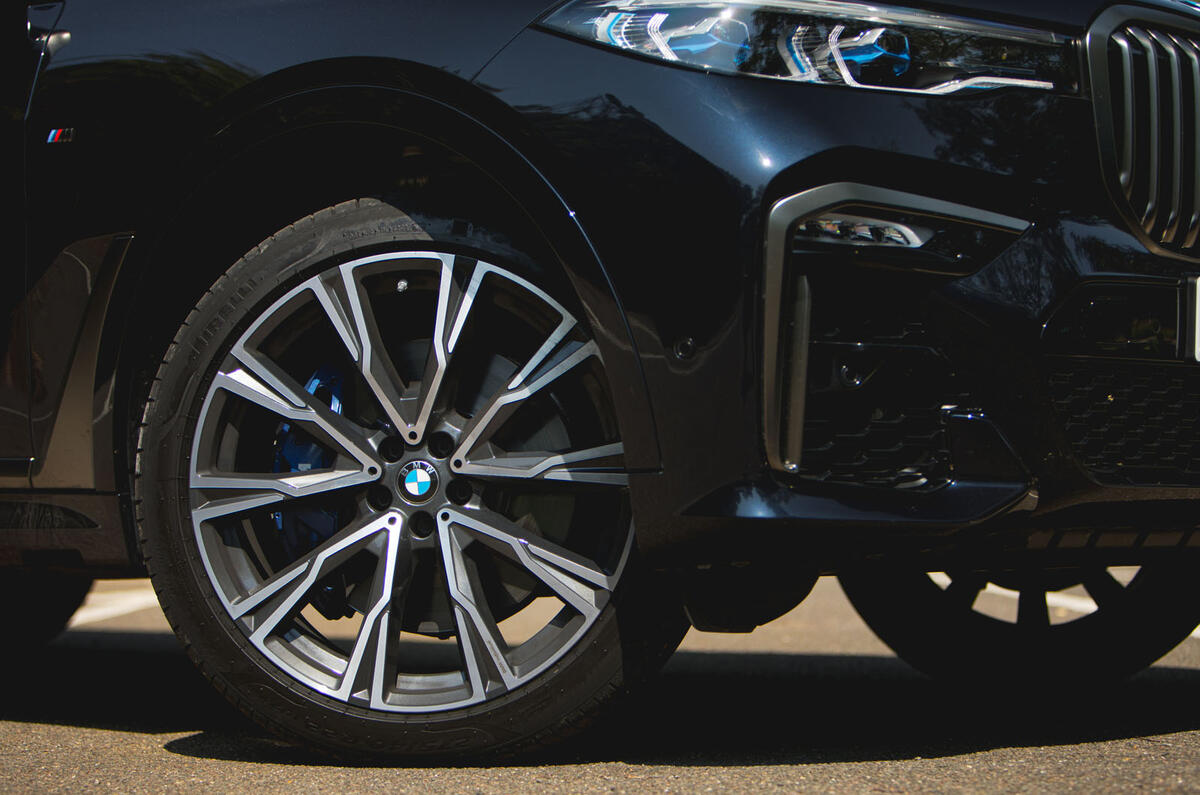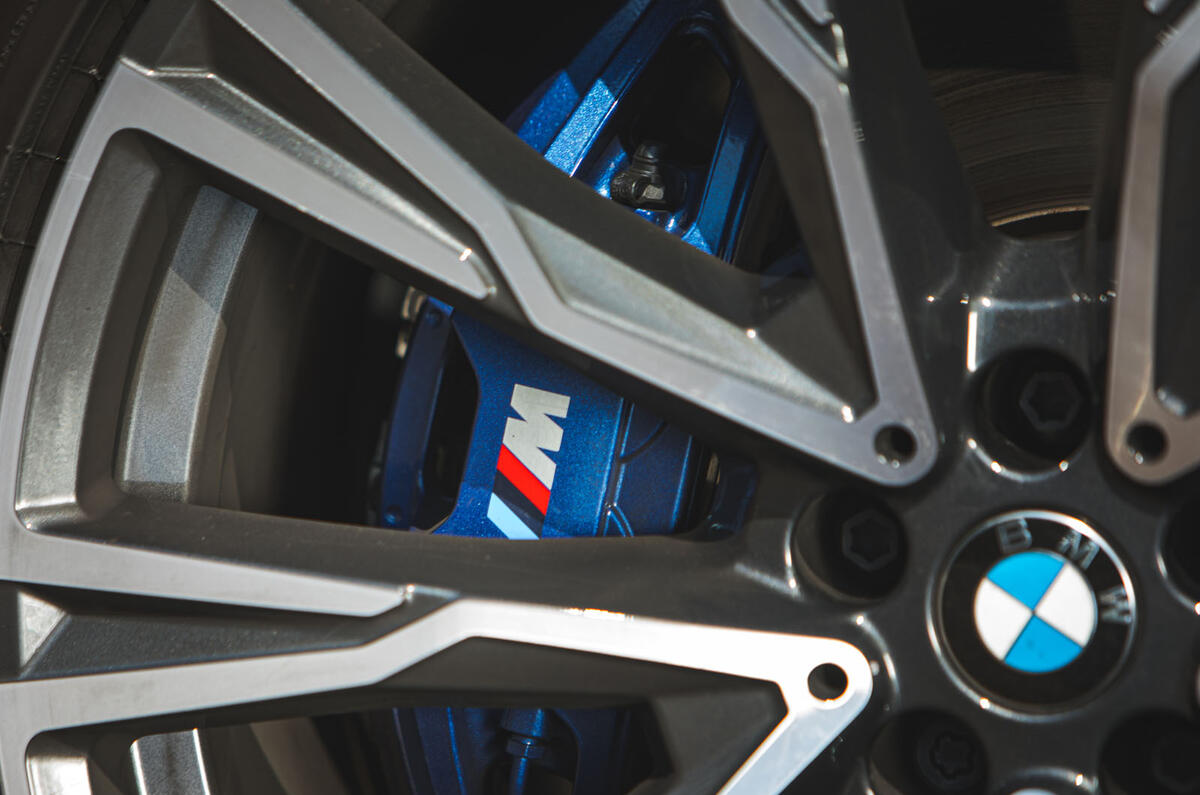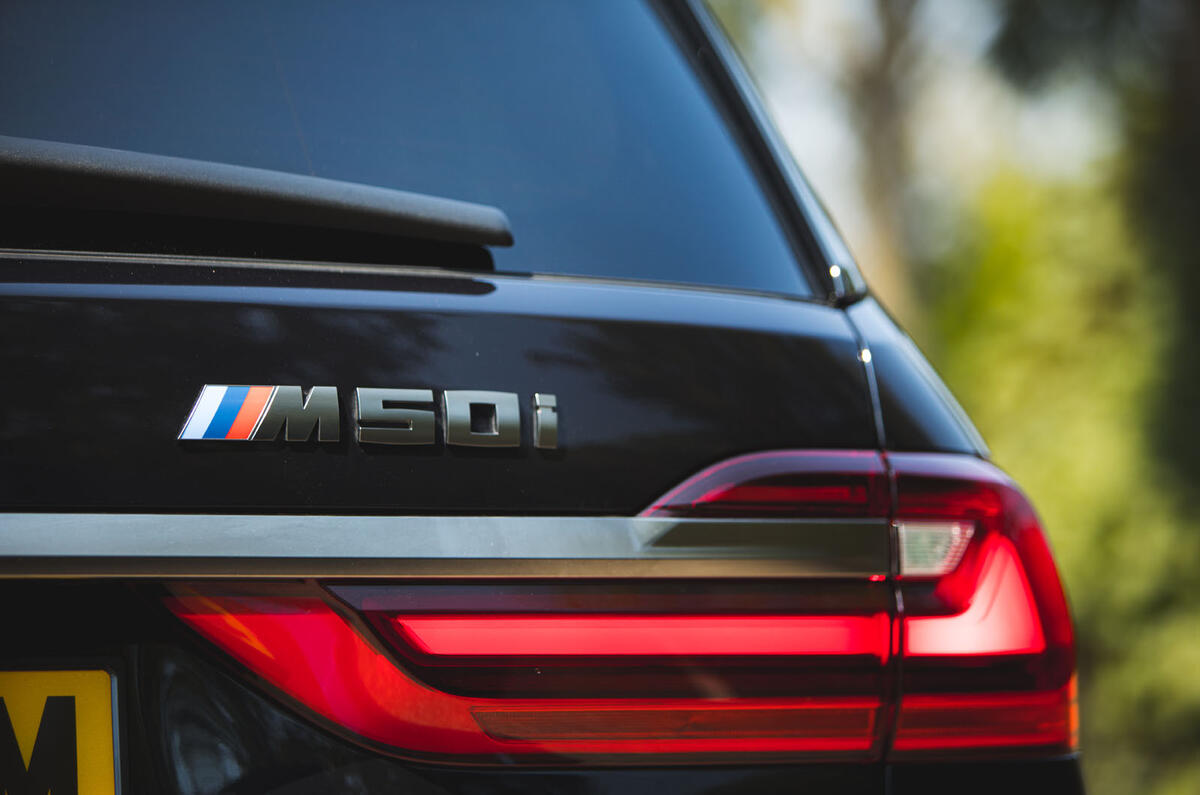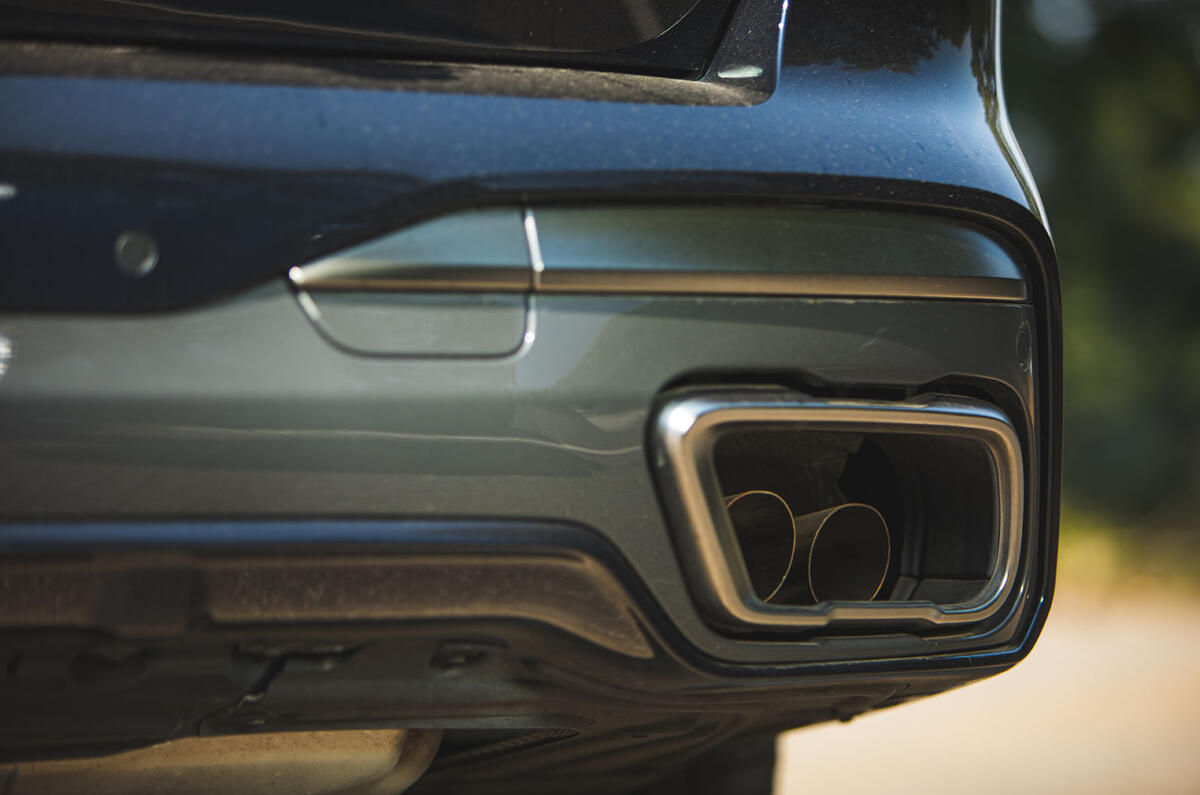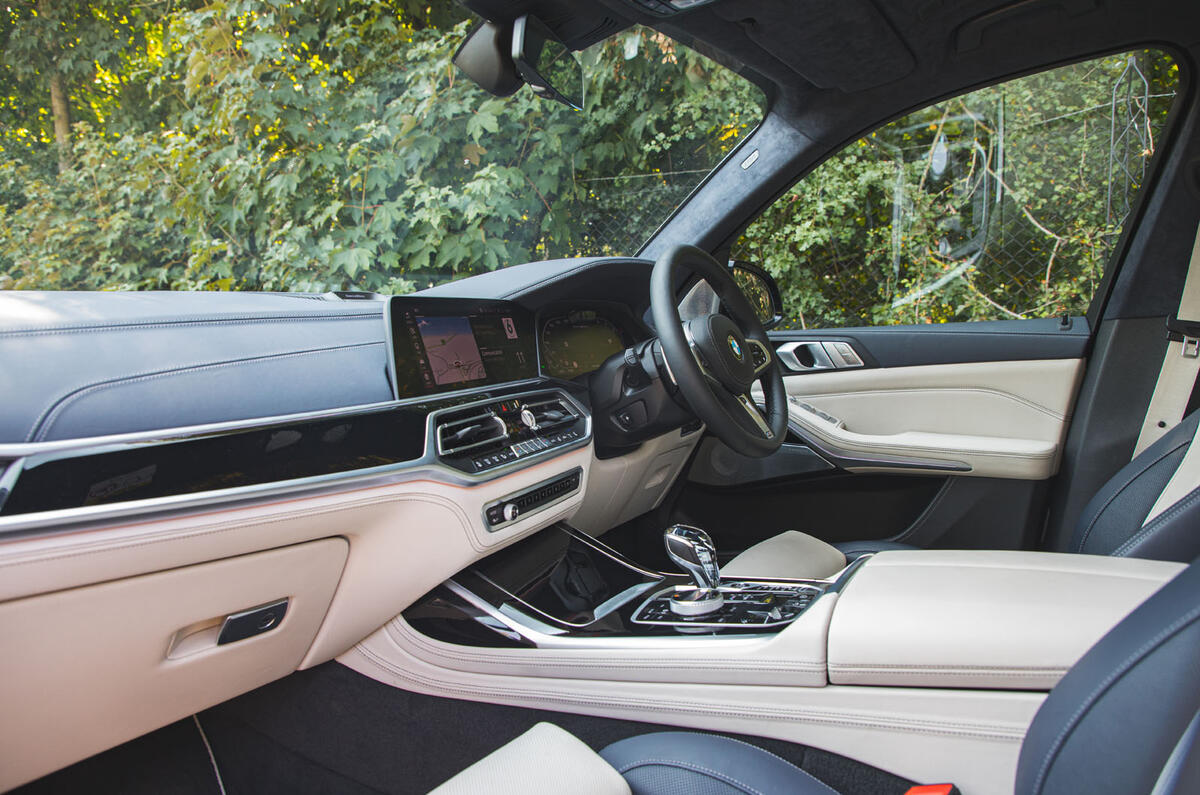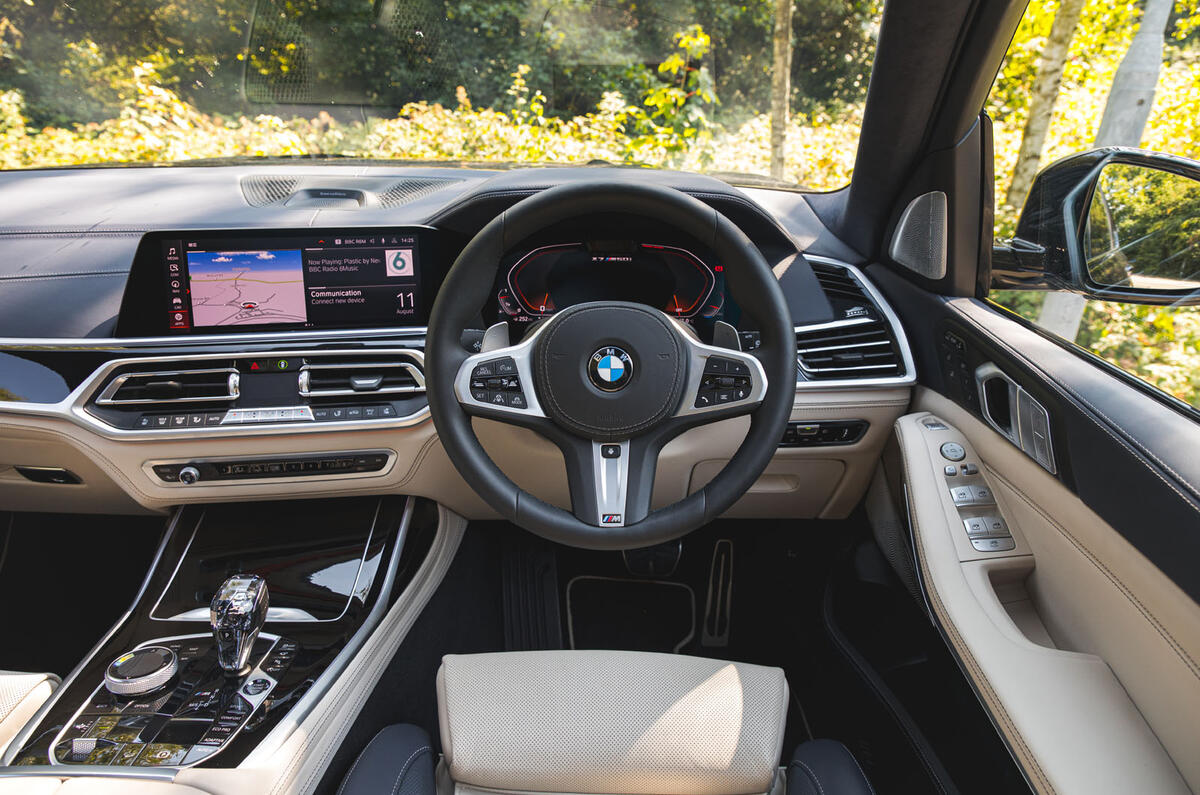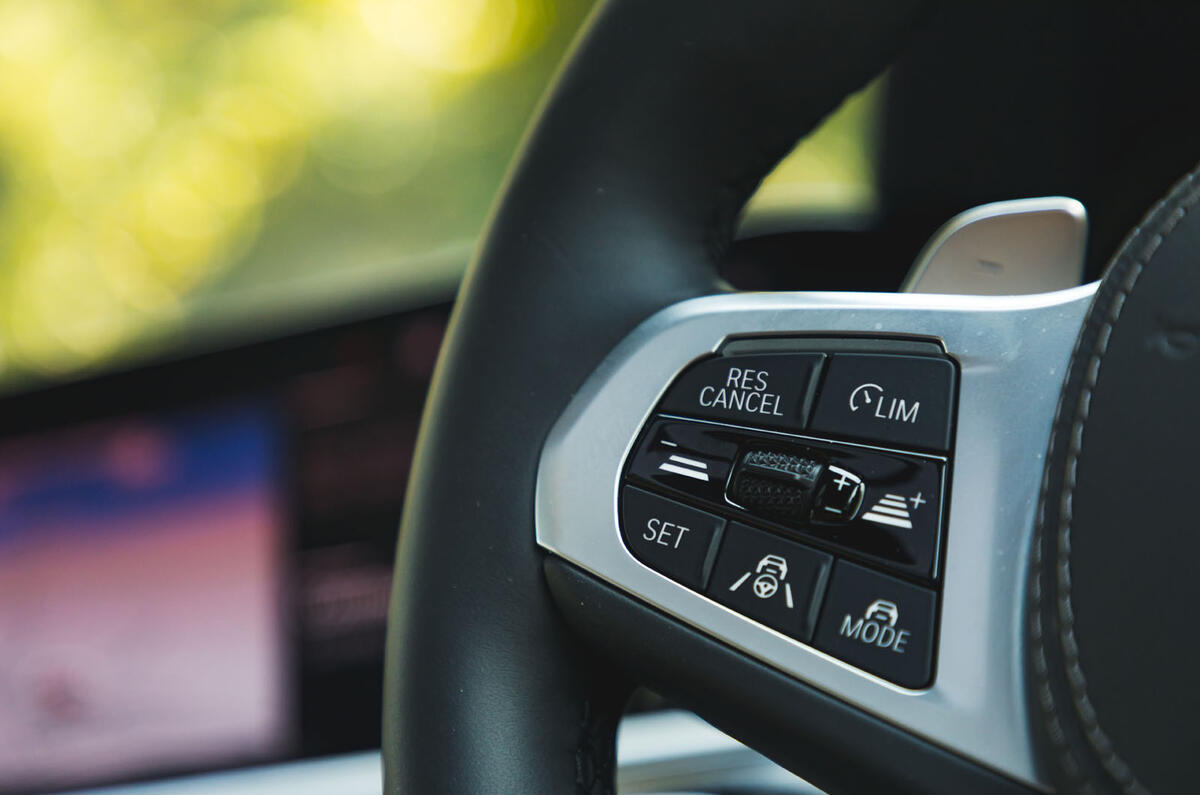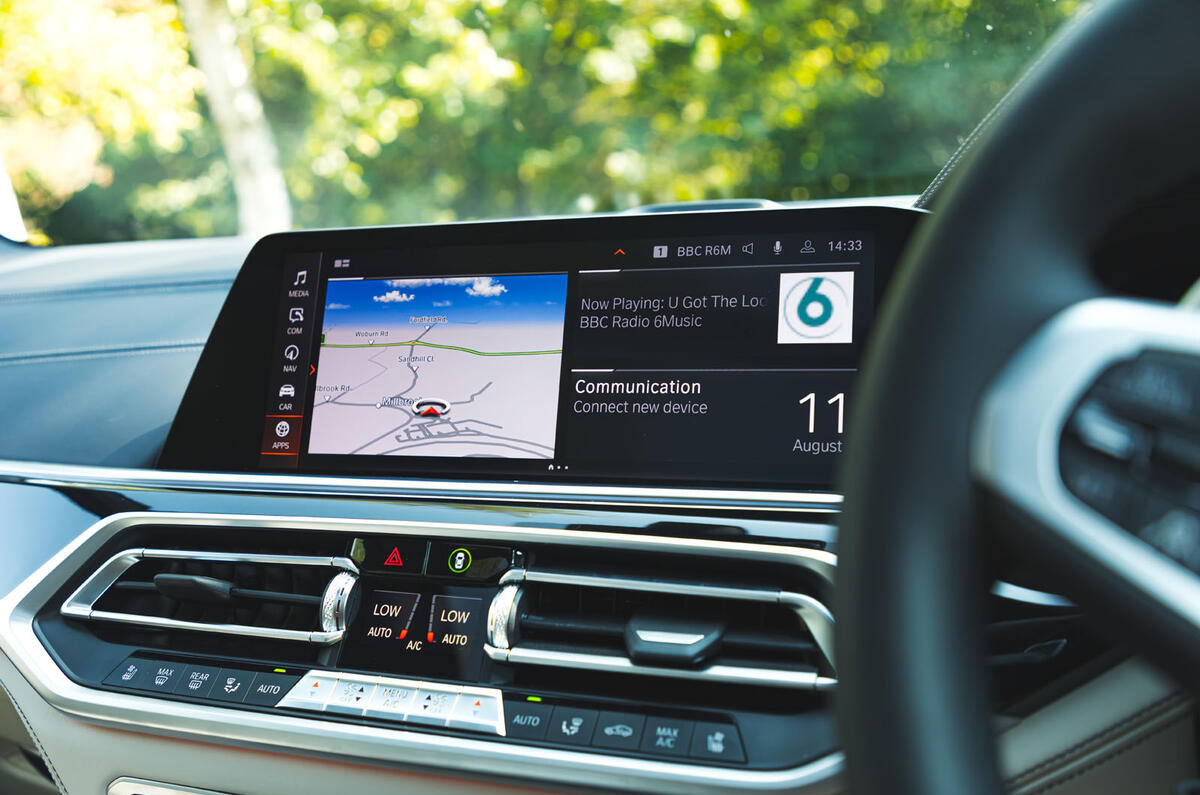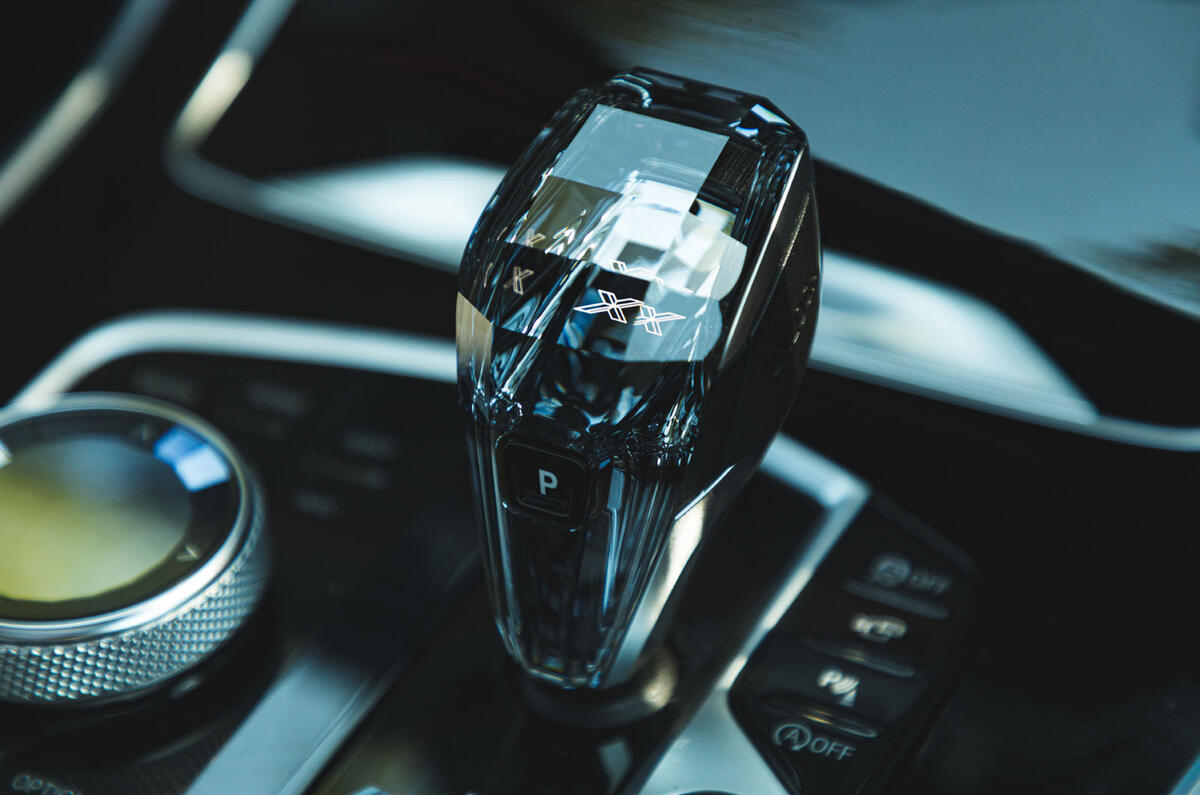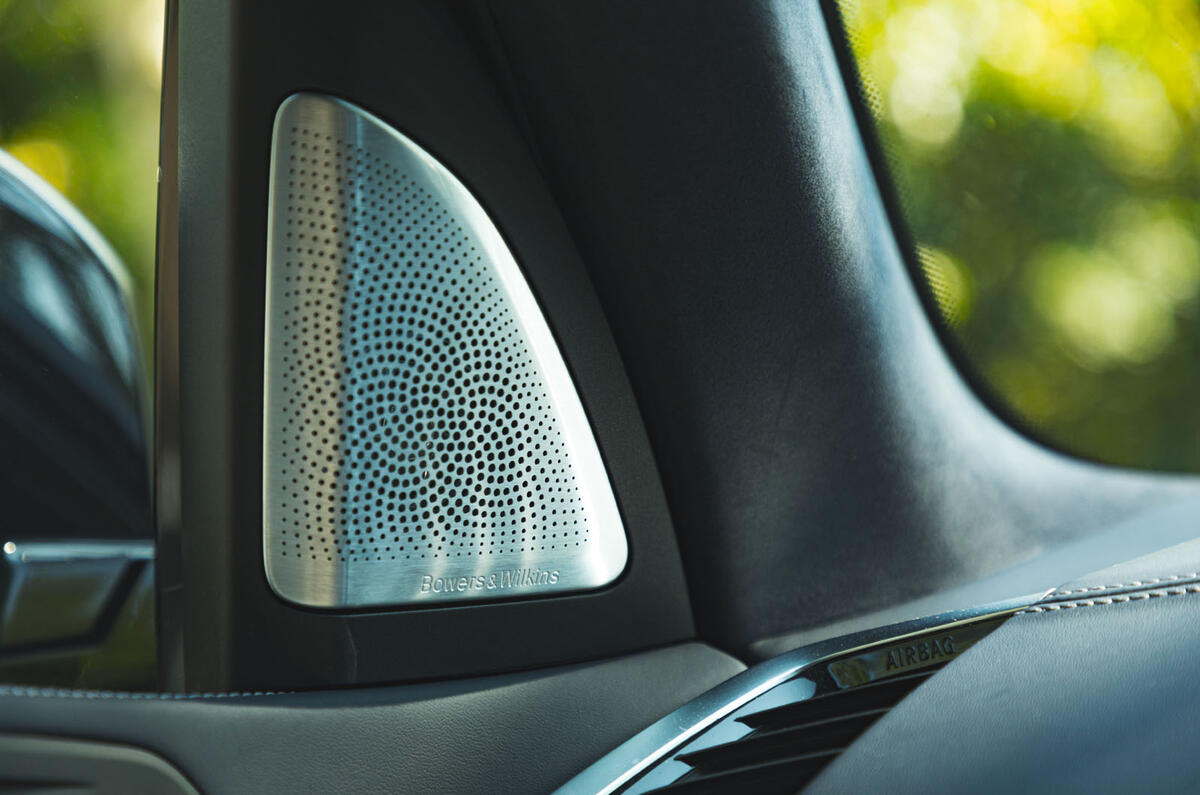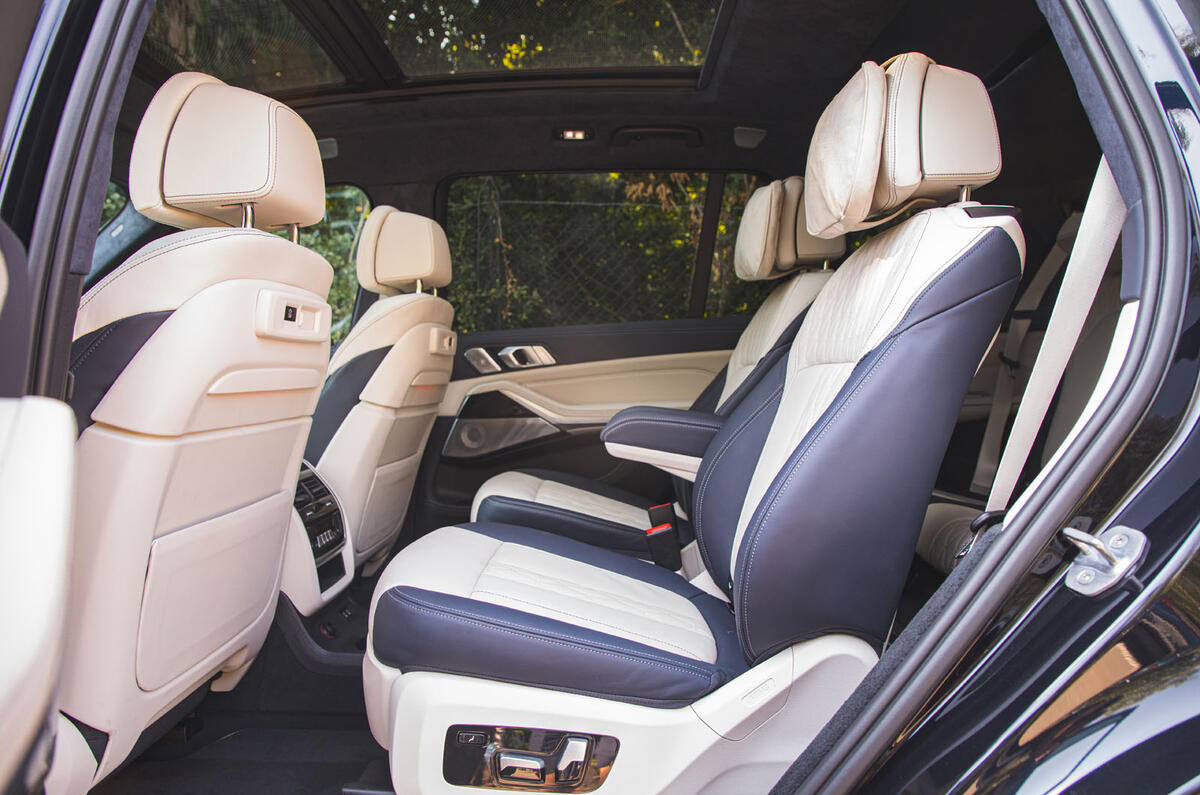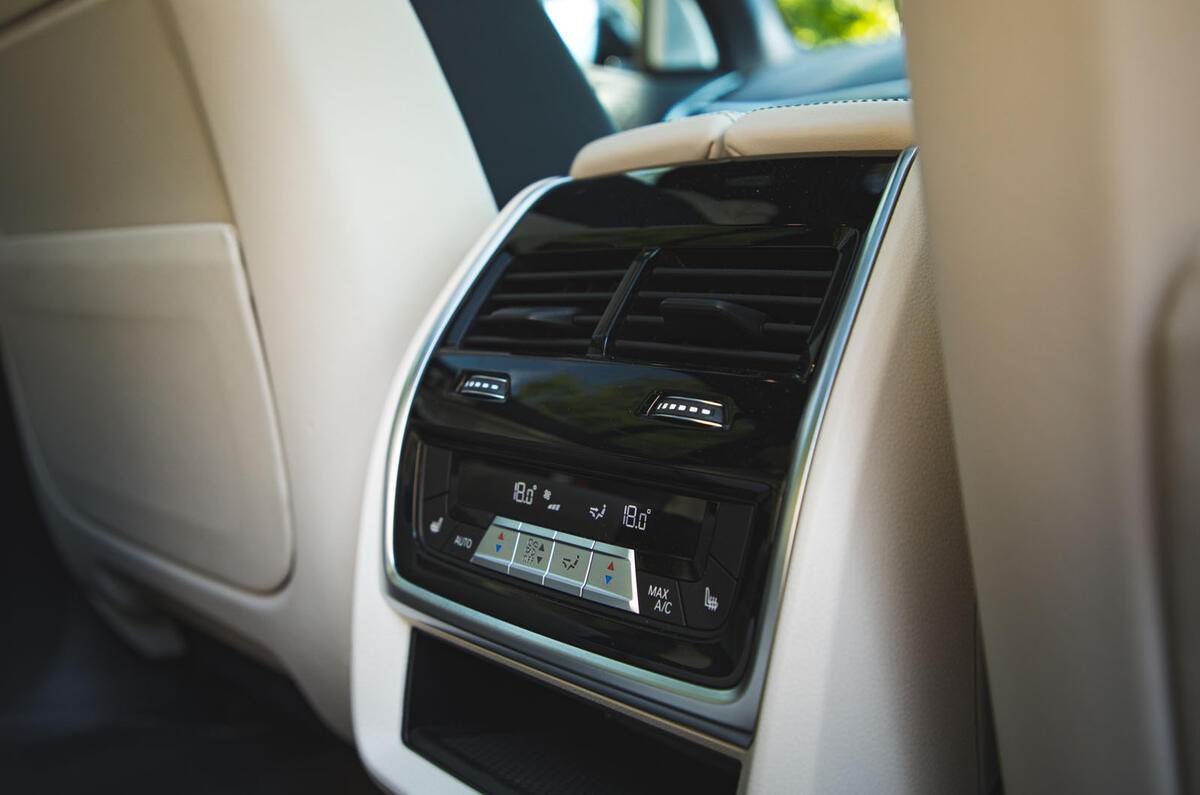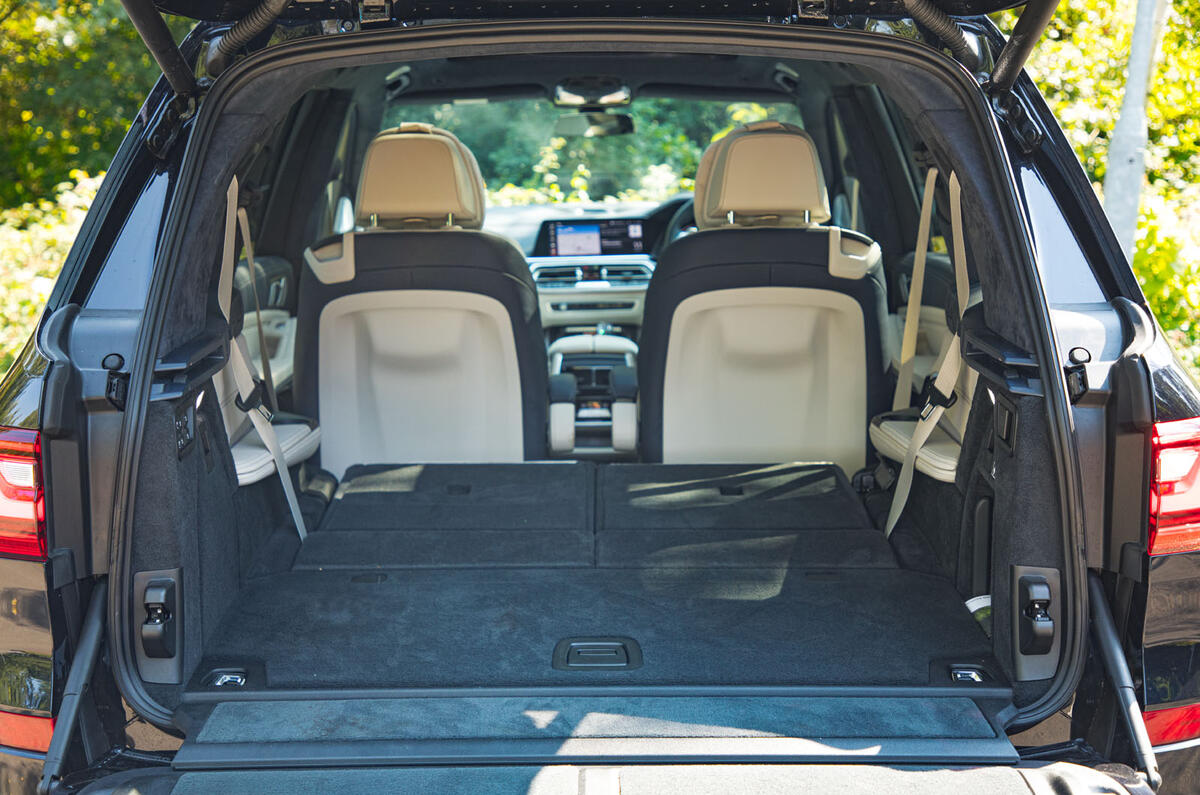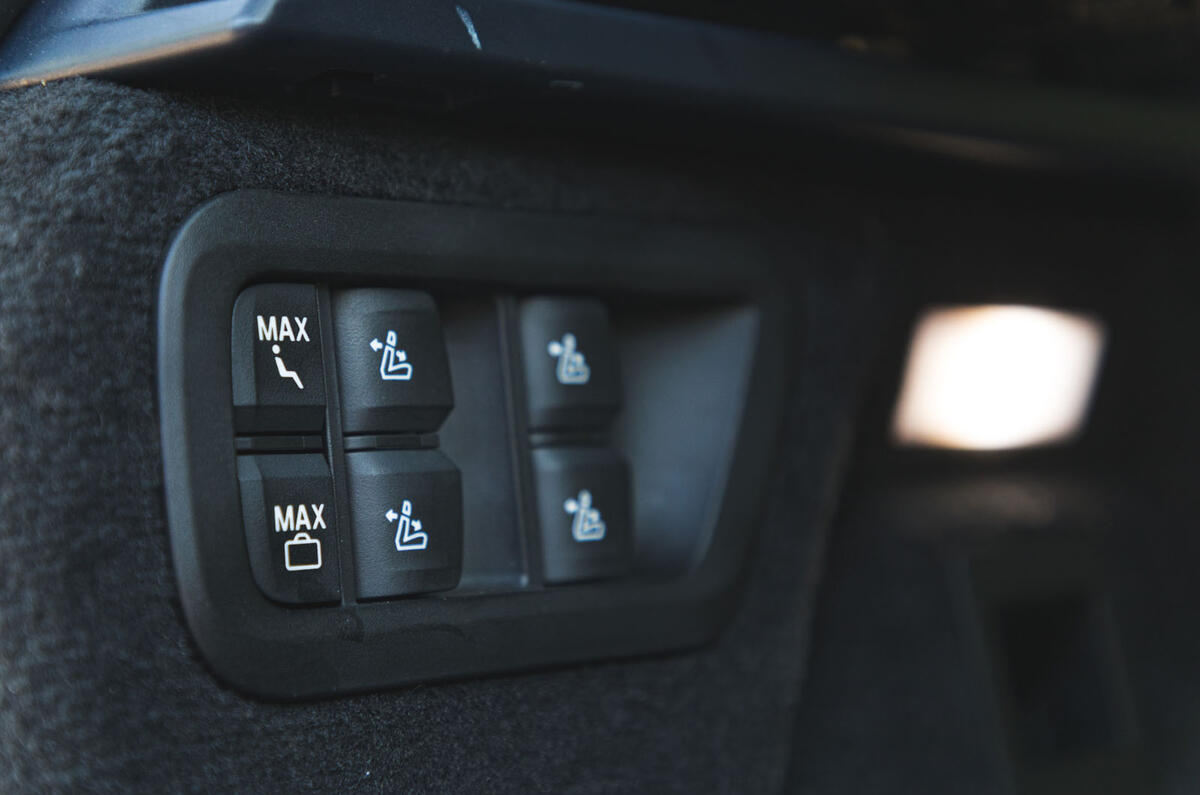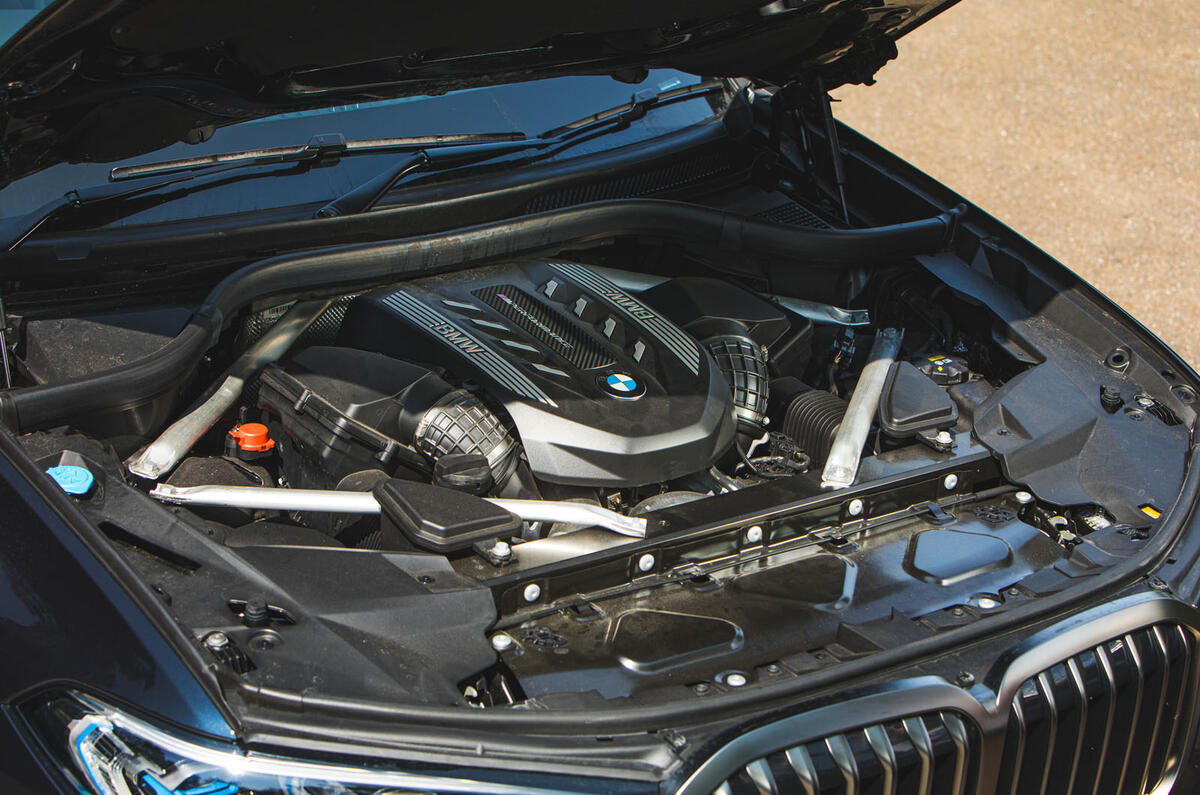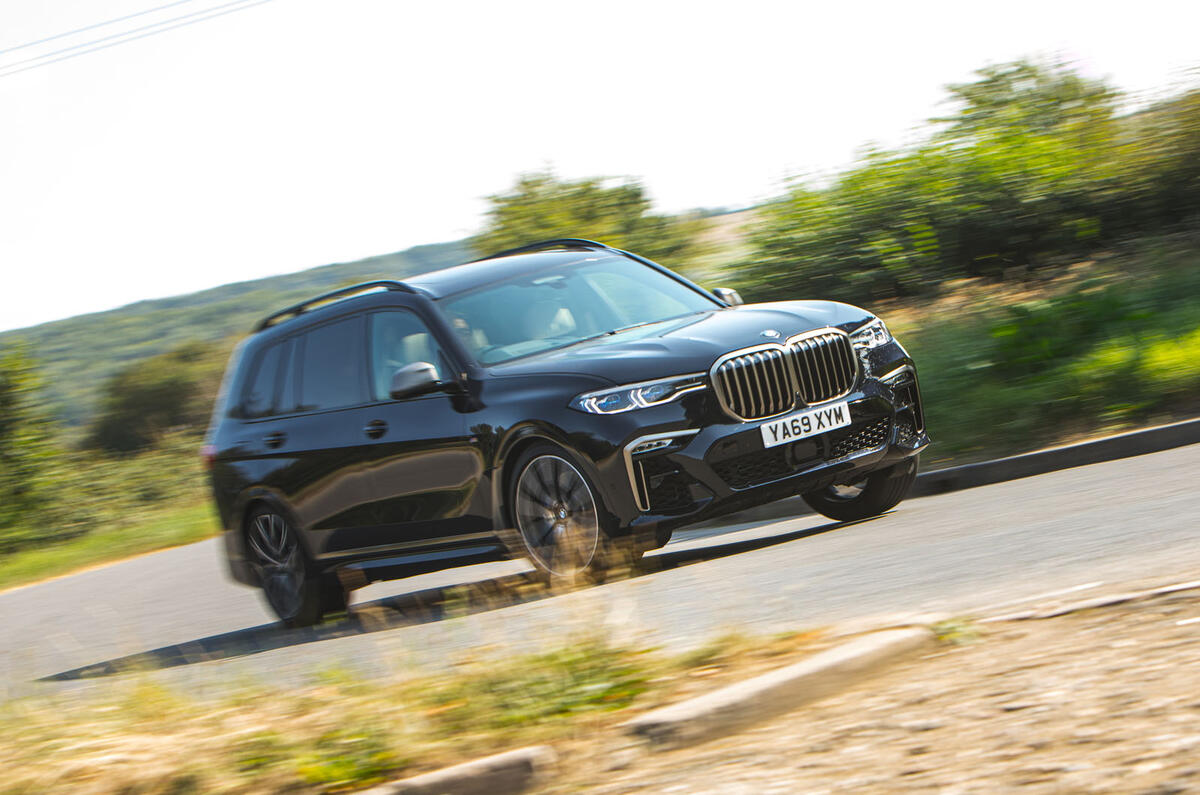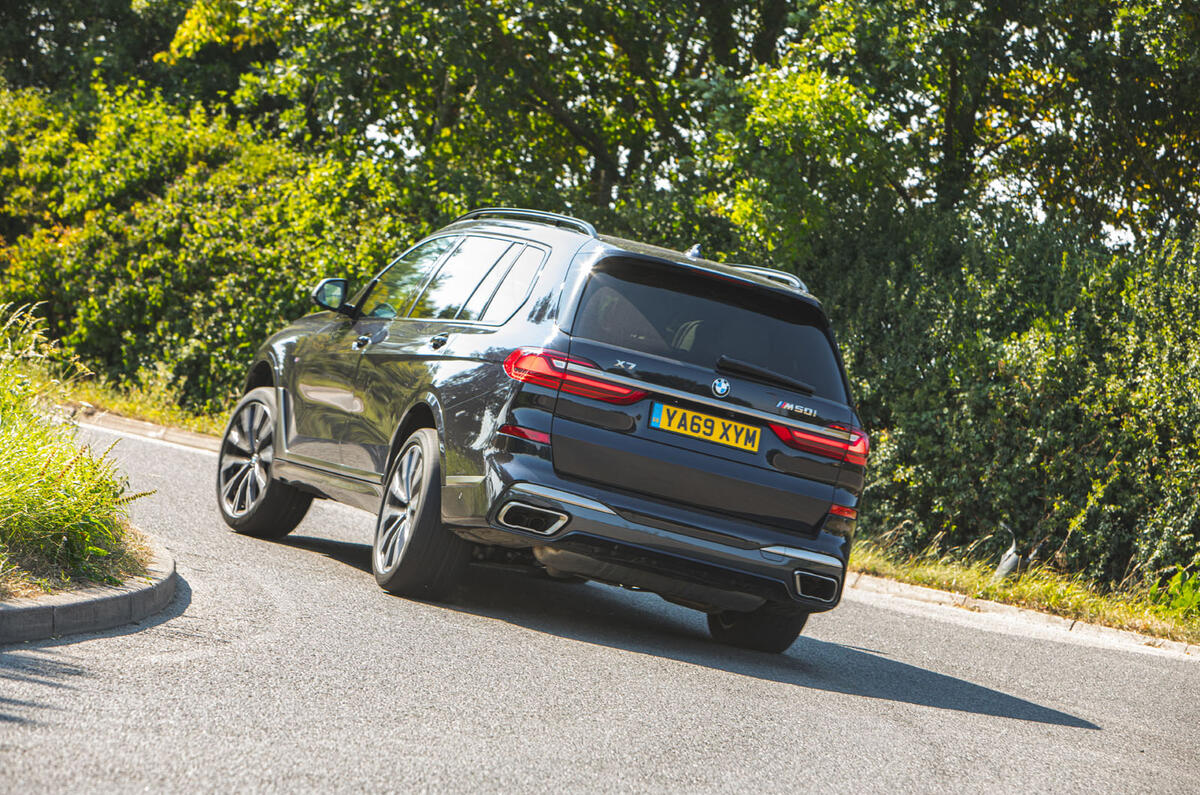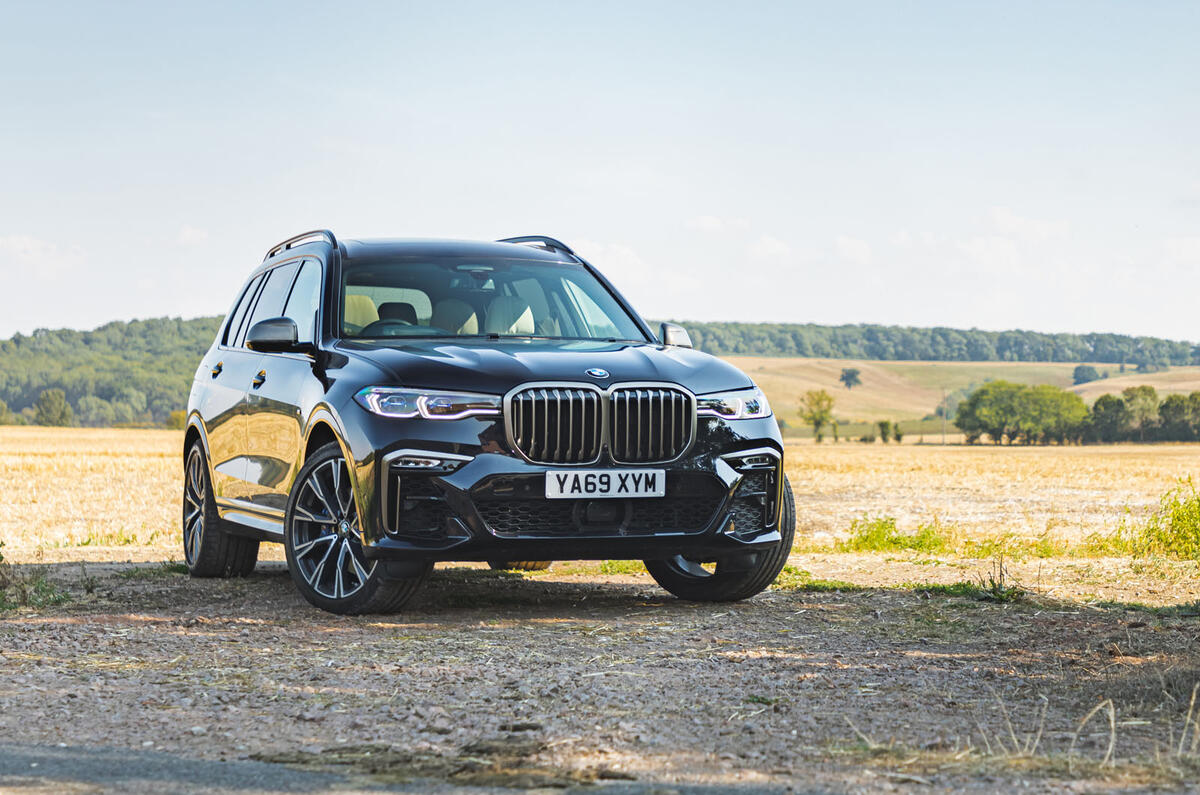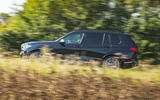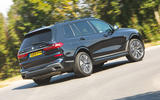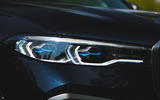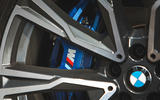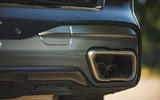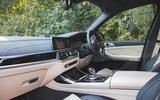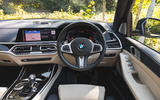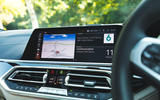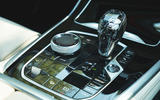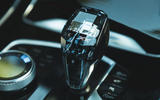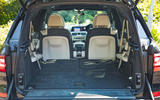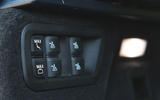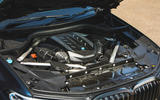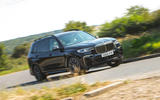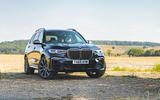The BMW X7’s fortress-like exterior is likely to attract as many would-be owners as it will repel, but the car’s cabin should find greater consensus.
Our example’s range-topping M50i specification and the fact that it benefits from BMW’s full Merino leather upholstery (a £4995 extra) ensure the place wants nothing for sumptuousness, and in terms of architecture you get essentially the same excellent layout as in the BMW X5, only scaled up to BMW 7 Series proportions and with even more head room.
Neither is the X7 short of an amenity or two. The biggest BMW money can buy is available with five-zone climate control, customisable ambient lighting, temperature-controlled cupholders, massaging front seats and glass running almost the entire length of the roof (albeit not, sadly, uninterrupted) that, at night, uses LEDs to generate an effect reminiscent of Rolls-Royce’s Starlight headliner. The infotainment suite is also unrivalled in terms of usability, even if the vast displays in the Mercedes GLS generate greater wow factor.
If there is one thing the X7 subtly lacks, it is sense of occasion. The way in which any full-sized Range Rover bottles ‘lounge’ feel is missing here, and the BMW is an altogether cooler place than the GLS, whose interior wraps itself more protectively around occupants. Perceived quality is high, though – higher perhaps than even the oddly soulless but recently revamped Audi Q7.
Where the X7 breaks new ground for BMW concerns the seating arrangement. Access to the third row of seats (also standard in the GLS and Q7) is more awkward than you might imagine because the gap created between the C-pillar and the electrically forward-folding second-row seats isn’t that generous.
However, once in those rearmost seats, passengers will be treated to comfort levels not far off those experienced in the front of the BMW 3 Series saloon. Our test car came with the optional six-seat layout, with two vast chairs in the second row instead of the typical three-seat bench. Again, the ambience isn’t quite so Business Class as in a Range Rover, but there is more space.
The X7 also gets a classic split folding tailgate that opens to reveal an almost perfectly flat boot floor. The 326 litres of capacity with all six seats in place is reasonably good and only marginally less than you’d get with a typical family hatchback.
BMW X7 infotainment and sat-nav
The X7 uses the latest version of BMW’s iDrive system, which reprises the much-liked rotary controller and pairs it with a new 12.3in display that is also touch-sensitive and can be controlled using voice commands and gestures.
The set-up is slick in operation, intuitive in its various layouts and very easy on the eye. It is also twinned with another 12.3in display within the instrument binnacle. Perhaps the most impressive trait of this ecosystem is that it somehow manages not to dominate the view forward and the dashboard in general, as is the case with rival systems on the Mercedes-Benz GLS and Audi Q7.
USB ports are smattered generously about the entire cabin and the Professional entertainment package brings 10.2in touchscreens, a Blu-ray-compatible DVD player and an HDMI socket to the second row.
For £3280, our car was also equipped with a Bowers & Wilkins 1500W sound system, which, to the layperson, delivers sonic richness and clarity that is a rare treat.



